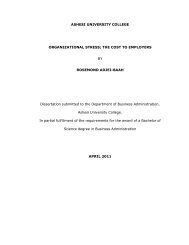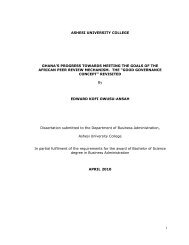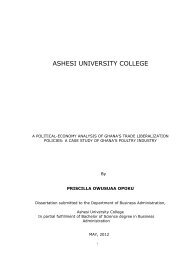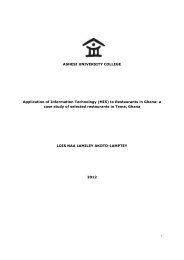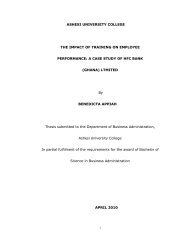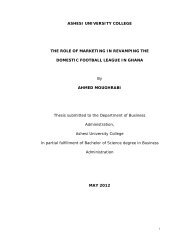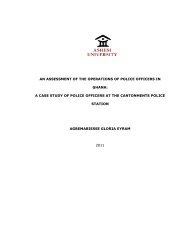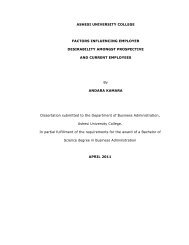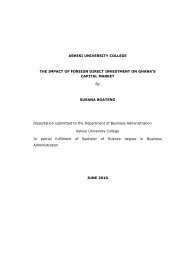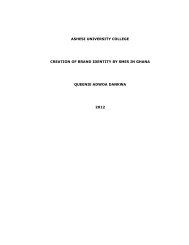ASHESI UNIVERSITY COLLEGE - Ashesi Institutional Repository ...
ASHESI UNIVERSITY COLLEGE - Ashesi Institutional Repository ...
ASHESI UNIVERSITY COLLEGE - Ashesi Institutional Repository ...
Create successful ePaper yourself
Turn your PDF publications into a flip-book with our unique Google optimized e-Paper software.
- “Different” (D)Many respondents understood culture to be the aspect of a community thatsets them apart from the rest. Culture facilitates easy identification and isalso a primary source of uniqueness.The discussion will focus on the cultural dimensions as they are thebasis of the study. Participants fell into the dimensions of Collectivism, HighPower Distance and Masculinity. Clarification of these dimensions helped inthe study to identify the five most common challenges faced due to thesecultural dimensions. The study, with the help of cross tabulations and chisquares, was successful in establishing the relationship between thechallenges and the cultural dimensions. The challenges faced were dictionchallenges, disconnection challenges, discomfort with rigid formality,inaccuracy issues and finally language issues.5.2.1 Individualistic vs. CollectiveIndividualistic cultures tend to be more independent. Everybody isexpected to take care of themselves and their immediate family only. Thefocus is on the individual as one person rather than being a part of a largercommunity. There is also emotional independence from organisations forindividuals with such cultures. In Africa, it is traditionally accepted that evenas a baby is born, that baby is given an identity as part of the community. Inexchange for this sense of belonging, individuals offer their loyalty.Traditionally, Africans are therefore more collective. There is emotionaldependence on individuals and institutions (Hofstede, 1983).38




